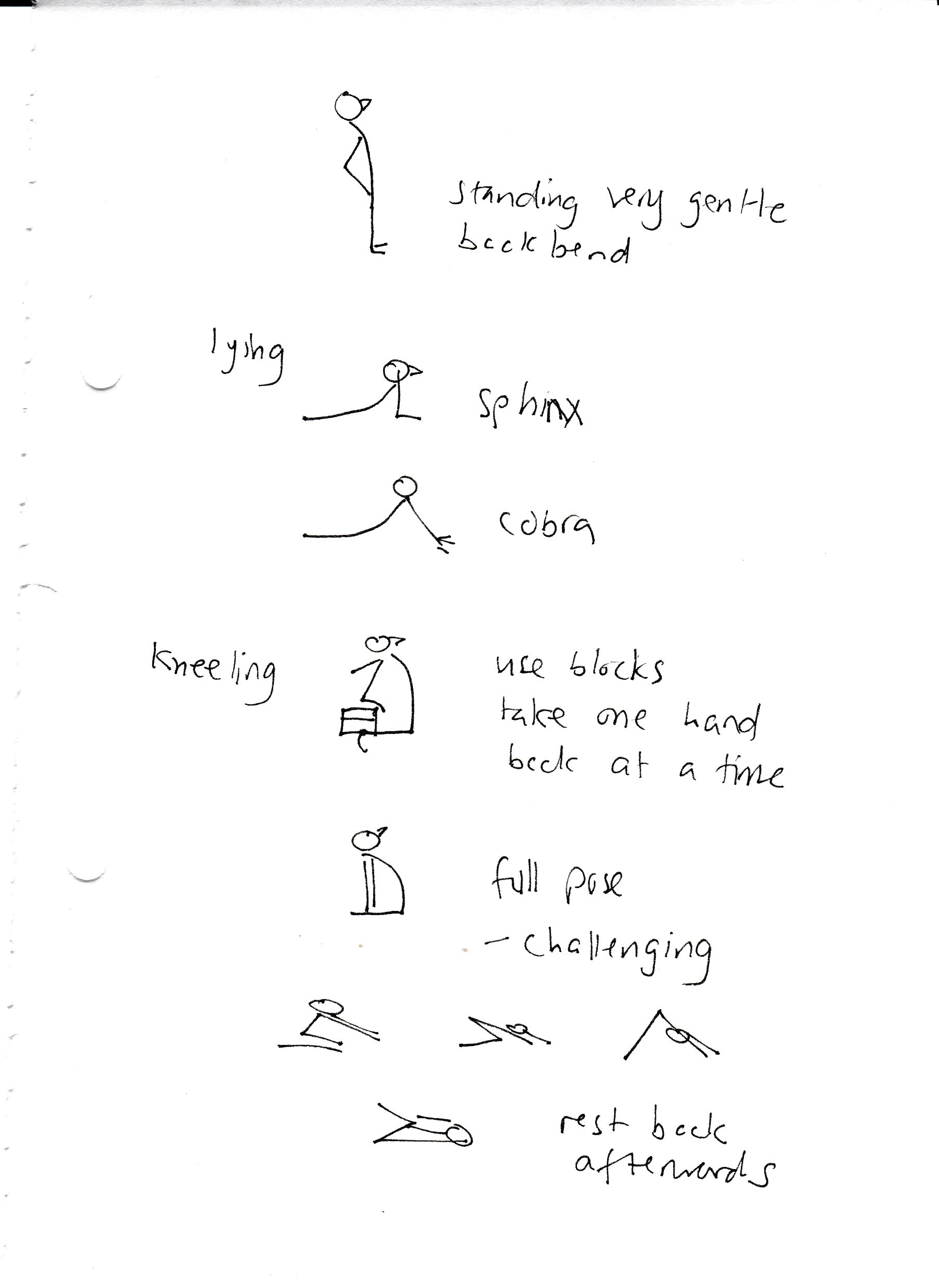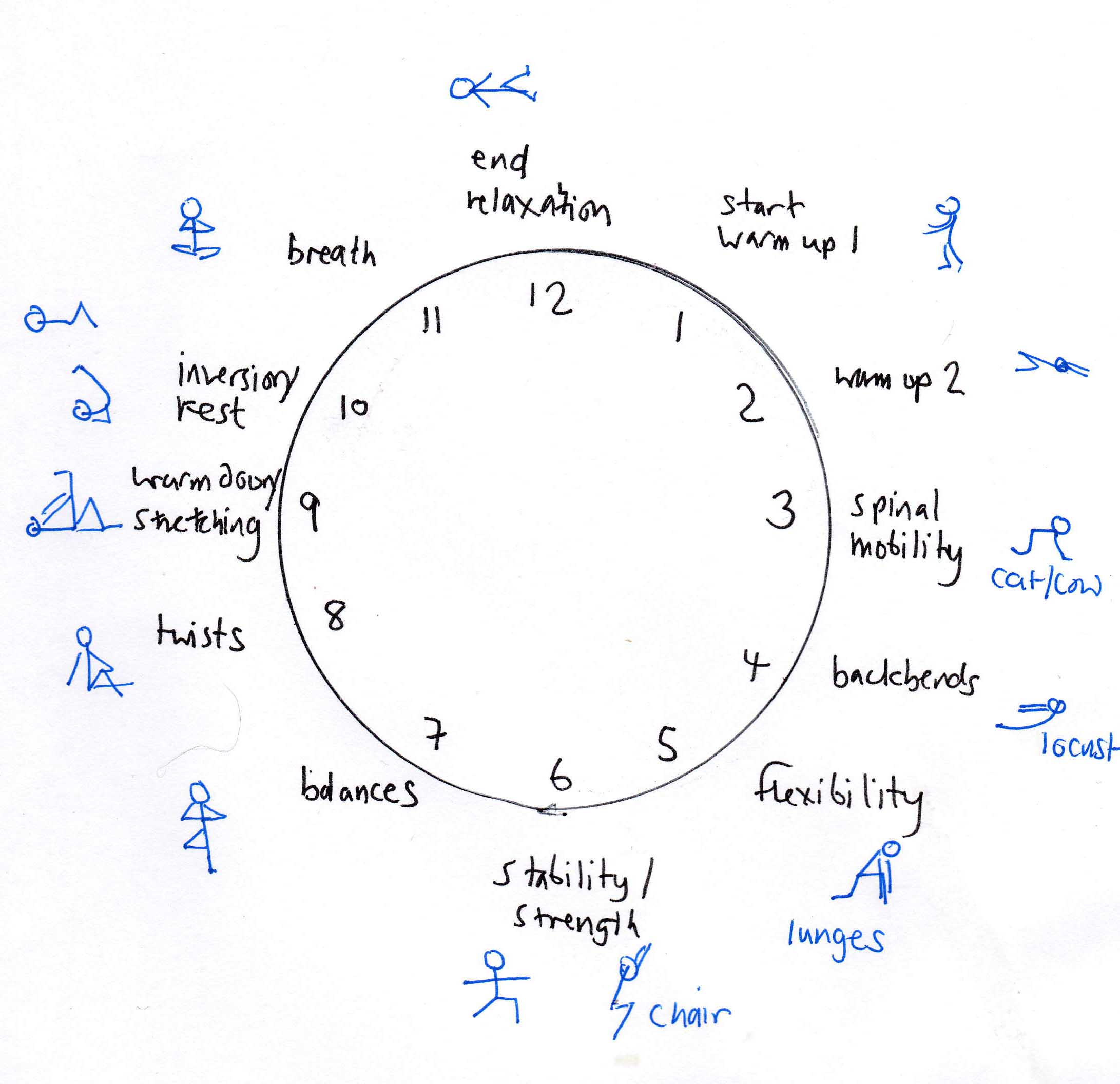Published: May 13, 2017 by Lucy Tennyson
Our focus this week was on backbends. They increase the mobility of the spine, and help counter rounded shoulders. They help inprove posture, especially if you spend time working at a desk or driving. They’re energising and even improve the way we feel.
Healthy spines need to be both strong and flexible – echoing the yoga concepts of effort and ease (Sthira and Sukha). The vertebrae are strong, enabling us to stand upright and protecting sensitive nerves, while the flexibility of ligaments and tendons allows the spine to move in different directions.
One thing we can do through yoga is strengthen the deep abdominal muscles that help support the backbone. Engaging the pelvic floor and the associated deep core muscles assists in lifting up and extending the spine, which we do before curving back. This helps prevent compression of the lower back, and encourages and opening up across the front of the chest.
But be sure to warm up first
Think about moving your spine in different directions, with, for example, cat cow variations, moving bridge, gentle twists and side bends. Move the hips and mobilise the shoulders. Perhaps then move on to some energising sun salutations, as they warm the whole body – but go easy for the first few by keeping to low cobra, and bringing the knees down rather than go into plank.
We next came down on the floor via downward dog into sphinx and then cobra, followed by deeper backbends such as high cobra and updog. Later in the class we worked harder in camel. Follow a backbend sequence by bringing the spine into a more neutral position such as child and downward dog.
Should the buttock muscles be active or relaxed in backbends? It seems this is a hot topic in the yoga world! In poses like bridge and cobra you can experiment with how the pose feels in different ways.
Be careful not to compress the back of the neck. For example in cobra there can be a tendency to tilt the head back whereas the back bend should stem from sending the chest forward and up. Try curling up to cobra keeping the chin tucked, the gaze forwards instead of up to keep the base of the neck relaxed.
Try also not to compress the lower back. In camel pose, come to kneeling and first draw your lower belly in and up before you start to lift your torso up and then back into the pose. Rest blocks on your heels if you are new to this pose so you don’t have so far to lean back. Keep the thighs vertical, and the hips moving forward.
In all full backbends we are working to extend the bend the entire length the spine. This coming week, we might include dhanurasana (bow) which is quite a testing pose - most of us will have a tendency to want to either pull more with the legs or with the arms depending on where we are more flexible in our spine. Doing both together requires a big effort!
A reminder of some the backbends we practised:


